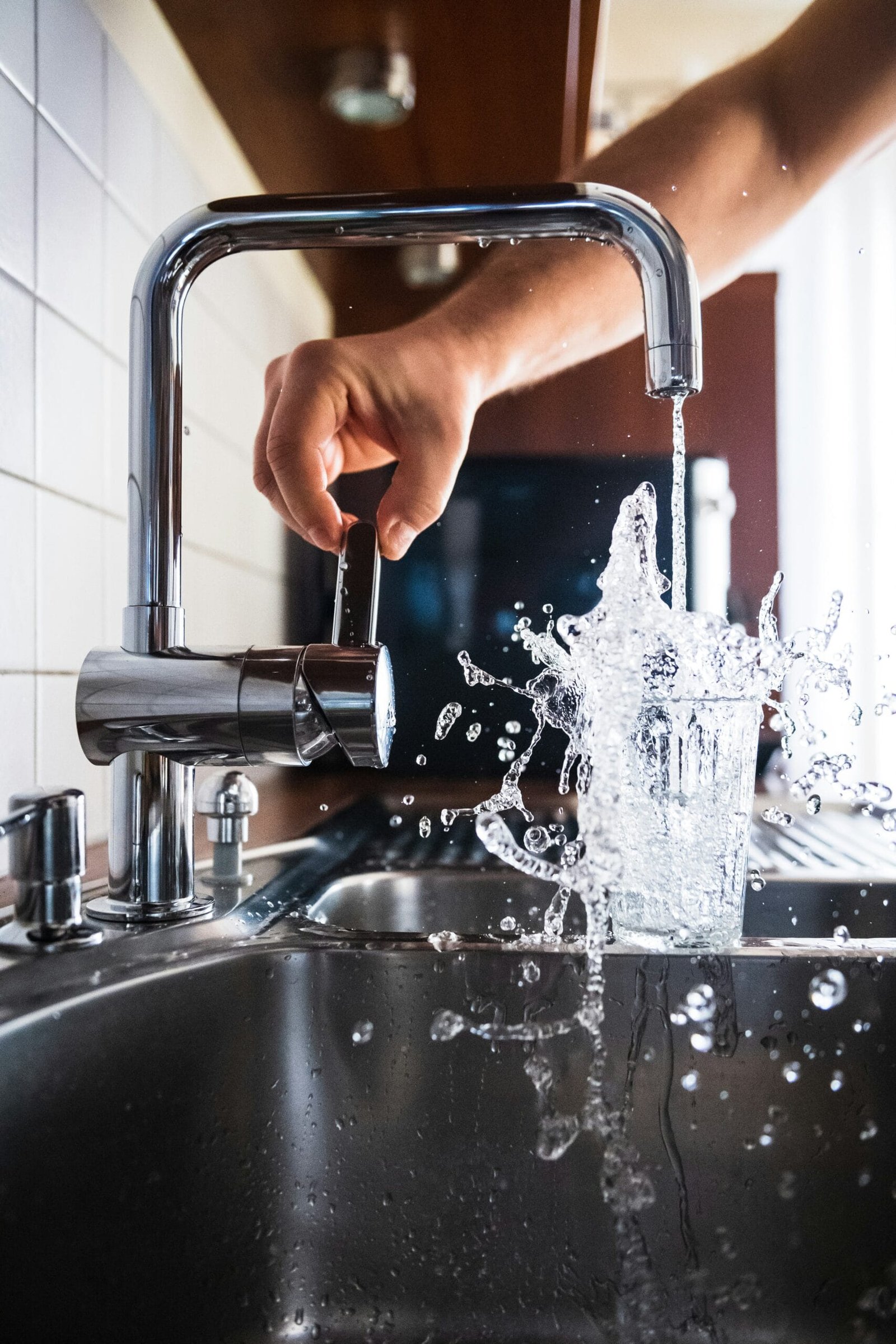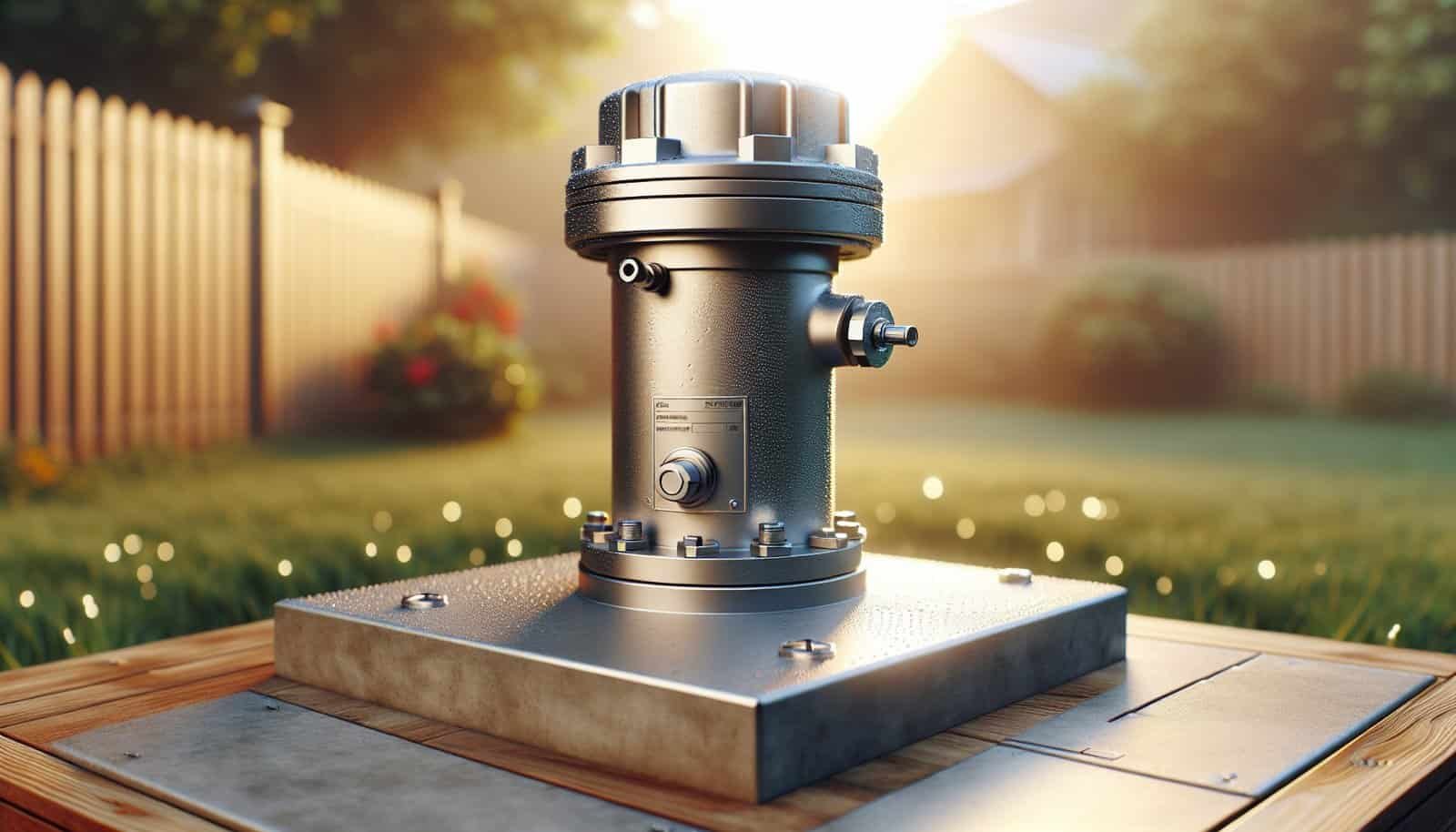Are you confident that your residential well meets the safety expectations for 2025?
Overview: Why well safety standards matter to you now
You rely on your well for drinking, cooking, bathing, and household tasks, so the standards that govern well construction, testing, and treatment directly affect your family’s health and property value. In 2025, the regulatory landscape continues to be a mix of federal guidance, state rules, local codes, and voluntary industry standards — and understanding how those layers interact helps you keep your water safe.
The regulatory landscape in 2025 — how responsibilities are split
You should know that well oversight is shared among different authorities, and the rules affecting your well often depend on where you live. Federal agencies provide guidance and enforce standards for public water systems, but most private residential wells are regulated at the state and local levels.
Federal role: EPA, CDC, and national guidance
The U.S. Environmental Protection Agency (EPA) sets legally enforceable standards (Maximum Contaminant Levels, or MCLs) for public water systems under the Safe Drinking Water Act. The Centers for Disease Control and Prevention (CDC) and EPA also publish guidance for private wells, including recommended testing and treatment approaches. While those federal standards don’t directly regulate most private wells, they are the benchmark you should use when assessing water quality.
State and local role: codes, permits, and inspections
Your state’s health or environmental agency usually issues regulations for well construction, permitted drilling, well abandonment, and setback requirements, and many states require licensed well drillers. Local health departments or building departments may issue permits, require inspections, and enforce contamination responses. Because of this patchwork, you must check state and local rules to know what legally applies to your property.
Industry and voluntary standards you should expect contractors to follow
Manufacturers, testing labs, and treatment systems are often certified to voluntary or consensus standards like NSF/ANSI, AWWA (American Water Works Association) guidelines, and IAPMO codes. These certifications demonstrate that equipment and components meet performance and safety criteria, and you should look for them when selecting treatment devices or hiring service providers.

Who does what? A quick responsibilities table
This table helps you see which entity typically handles different aspects of well safety. Note that specifics vary by state and locality.
| Issue | Typical Responsible Entity | What you should do |
|---|---|---|
| Drinking water standards enforcement (public systems) | EPA / State primacy agencies | Use EPA MCLs as benchmarks for private wells; test regularly |
| Private well construction and permits | State or local health/building department | Obtain permits; hire licensed driller |
| Well drilling, construction, and abandonment | Licensed well driller/contractor | Verify credentials and state requirements |
| Water quality testing | Certified laboratories | Follow sampling protocols; test to recommended schedule |
| Treatment device certification | NSF/ANSI or other certifiers | Select devices certified to relevant standards |
| Contamination incident response | Local health department / state agency | Report contamination; follow guidance (boil water, remediate) |
Construction and siting standards you should know
Proper siting and construction limit contamination risk. Standards typically cover well location relative to contamination sources, materials and workmanship for casings and seals, and methods for sanitary wellheads.
Well siting: where your well should be placed
You want your well located uphill and as far as possible from potential pollution sources such as septic systems, livestock areas, fuel tanks, chemical storage, and roadways. Setback distances vary by state, but the purpose is the same: protect groundwater from surface and nearby subsurface contaminants.
Well casing, grout, and sanitary seal: the well’s protective shell
Your well’s casing (steel or PVC) and grout/seal around it form a barrier preventing surface contaminants from entering the groundwater near the well. Regulations generally require adequate casing depth, corrosion protection, and a continuous grout or seal from the surface down to a required depth. Maintaining the integrity of these elements is critical to long-term safety.
Wellhead protection: caps, vents, and above-ground features
A watertight well cap and a sanitary wellhead extension protect your well from insects, animals, and surface runoff. Vents should be screened to allow air while keeping pests out. You should also ensure the casing extends above ground level and the area around the well slopes away to shed surface water.

Common siting and setback practices — general guidance
Exact distances differ by state and county, but here are common recommendations you can use as a starting point. Always verify local rules before siting a new well.
| Potential source | Typical recommended setback (common range) | Notes |
|---|---|---|
| Septic tank | 25–50 feet | Tanks may vary; state/local rules apply |
| Septic drain field (leach field) | 50–200 feet | Leach fields typically require larger setbacks |
| Property line | 5–10 feet | Varies with local ordinances |
| Road or driveway | 10–25 feet | To reduce contamination from runoff |
| Fuel storage or chemical storage | 50–200 feet | Larger distances recommended where risk is higher |
| Animal housing or manure storage | 50–200 feet | Livestock increases microbial risk |
Water quality standards and testing you should follow
Testing is the primary way to confirm your well water is safe. You should use EPA MCLs and health-based guidelines as reference points, even if those standards formally apply to public systems. Regular testing protects your family and gives you data for troubleshooting.
Which contaminants to test for and why
You should test for contaminants that are common in your region and those that pose immediate health risks. Basic and priority tests include bacteria (total coliform and E. coli), nitrate/nitrite, pH and alkalinity, total dissolved solids (TDS), and locally relevant contaminants like arsenic, uranium, or naturally occurring radionuclides. Emerging contaminants such as PFAS (per- and polyfluoroalkyl substances) are becoming a higher priority; whether to test depends on nearby industrial activities, firefighting foam use, or local advisories.
Recommended testing frequency
You should establish a testing schedule for routine and special circumstances. Here are general recommendations you can follow:
| Test | Recommended frequency |
|---|---|
| Bacteria (total coliform, E. coli) | At least once a year, and after repairs or contamination events |
| Nitrate / nitrite | At least once a year |
| Lead and copper | Test if you have older plumbing or if corrosion is suspected; at least once |
| Arsenic | At least once when you move in; repeat if levels close to concern or after treatment changes |
| pH, hardness, TDS | Every 1–3 years or when troubleshooting |
| VOCs (solvents, fuels) | If nearby industrial sites or spills are suspected |
| PFAS and other emerging contaminants | Based on local risk factors and advisories; consider testing if suspected |
Using EPA MCLs and other health benchmarks
You should use EPA MCLs as health-based benchmarks. For example, the EPA MCL for arsenic (10 micrograms per liter / 10 ppb) and the MCL for nitrate (10 mg/L as nitrogen) are widely used reference points. Although these MCLs are enforceable for public systems, they provide practical targets for private well safety. For contaminants without established MCLs (or for emerging contaminants), consult state health agencies and trusted labs for guidance.

Treatment standards and certified equipment you should use
When you install treatment units, choose products certified for the contaminants you need to remove. Certification indicates that the device was independently tested to meet performance claims.
Key NSF/ANSI standards to look for on treatment devices
You should look for these common NSF/ANSI standards when evaluating equipment:
- NSF/ANSI 61: Drinking water system components — health effects.
- NSF/ANSI 53: Treatment devices for health-related contaminants (e.g., lead reduction, cyst removal).
- NSF/ANSI 58: Reverse osmosis systems.
- NSF/ANSI 55: Ultraviolet (UV) microbiological water treatment systems.
- NSF/ANSI 401: Emerging compounds and incidental contaminants.
- NSF/ANSI 372: Lead-free compliance for wetted materials.
Matching technologies to contaminants
Different contaminants require different treatment approaches. Use the table below to match common technologies with contaminants they typically address. Always confirm device performance via certifications.
| Contaminant(s) | Typical treatment technologies | Look for certification |
|---|---|---|
| Bacteria, viruses, protozoa (microbial) | UV disinfection, chlorination (shock), ultrafiltration | NSF/ANSI 55 for UV; third-party performance claims |
| Lead | Point-of-use filters (specific cartridges), reverse osmosis, whole-house filters designed for lead | NSF/ANSI 53 or 58; NSF/ANSI 372 for lead-free materials |
| Nitrate | Ion exchange, reverse osmosis, distillation | NSF listings for RO (NSF/ANSI 58) or lab-verified performance |
| Arsenic | Reverse osmosis, adsorption media (iron oxide), ion exchange | Check vendor testing; some media certified to NSF standards |
| VOCs (solvents, fuels) | Granular activated carbon (GAC) systems, air-stripping + off-gas treatment | NSF/ANSI 53 for certain VOC reductions; lab verification recommended |
| PFAS | Activated carbon adsorption (GAC), granular or specialty media, reverse osmosis | Emerging certifications; confirm performance data for PFAS species |
| Hardness (mineral scale) | Ion exchange softeners, template-assisted crystallization | Not a health concern; manufacturer performance claims |
Sampling protocols and lab selection you should follow
You need reliable test results to make informed decisions. How you collect and where you send samples matters.
Proper sampling techniques
You should collect samples following the laboratory’s instructions and state-required protocols. For bacterial testing, use sterile containers and take a first-draw and flushed sample as instructed. For metals and some organics, you may need acid-preserved or filtered samples. Avoid sampling after treatment devices unless the device performance is the subject of the test (i.e., specify whether you want raw well water or treated water tested).
Choosing a certified laboratory
You should use a laboratory certified by your state for drinking water analysis and accredited to appropriate standards (e.g., EPA drinking water methods). Certified labs provide reliable detection limits and will guide you on sample containers, preservation, holding times, and chain-of-custody.

Addressing common contaminants — how you should respond
When test results show contamination, respond promptly based on the contaminant and concentration.
Bacterial contamination (total coliform, E. coli)
If bacteria are detected, you should assume a potential health risk until resolved. Follow local health department guidance, which may include boiling water for drinking and cooking, shock chlorination of the well, retesting after disinfection, and investigating possible contamination sources (e.g., cracks in the casing, surface runoff, nearby livestock). Persistent bacterial contamination may require a permanent disinfection system or repair of the well structure.
Nitrate contamination
You should take elevated nitrate seriously, especially if infants, pregnant women, or nursing mothers are present, since nitrates can cause methemoglobinemia in infants. If nitrate exceeds recommended levels, stop using the well for infant formula and consult a professional. Treatment options include reverse osmosis and ion exchange, or connecting to a safe water source.
Arsenic, uranium, and other naturally occurring contaminants
If your water contains harmful levels of arsenic or other natural contaminants, you should consider treatment tailored to the contaminant (adsorption media, RO, or other certified systems) and consult state resources for funding programs, if available. Long-term exposure risks require prompt attention.
Lead and copper from plumbing
If lead or copper is detected, you should determine whether the contamination is from the well or household plumbing. If from plumbing, replace lead-bearing fixtures and consider corrosion control or point-of-use devices to remove lead.
PFAS and other emerging contaminants
If testing indicates PFAS or other emerging contaminants, you should consult state advisories and public health agencies for action levels and guidance. Treatment options such as activated carbon and RO can reduce many PFAS, but performance can vary by compound and system design.
Maintenance and routine care you should perform
Good maintenance reduces the chance of contamination and extends the life of your well system.
Routine maintenance tasks
You should carry out annual inspections for the well cap, casing, vent, and sanitary seal. Keep the area around the well clear of debris, chemicals, and structures that could trap water. Maintain landscaping so runoff diverts away from the wellhead. Have your well pump and pressure system inspected on a schedule recommended by your drillers or pump installer.
Recordkeeping you should keep
You should store permits, construction logs, well logs (which show depth, casing, and geologic information), sampling results, and maintenance receipts. These records are helpful for troubleshooting, resale, and when seeking assistance from health departments.

Hiring professionals, contractors, and labs — what you should check
Choosing qualified people saves time and reduces errors. You should verify licenses, certifications, insurance, and references.
How to vet a well driller or contractor
You should confirm a driller’s license with your state, ask for proof of insurance, and request references. Get written estimates and a clear scope of work, including casing depth, grouting method, and completion documentation. Ask whether the driller will perform sanitary seals, pump tests, and provide a well log.
How to vet a water treatment installer
You should ask whether the installer is certified for the equipment being installed, whether the device is certified to NSF/ANSI standards for the intended contaminants, and whether the installer will provide routine servicing and a maintenance plan.
How to pick a laboratory
You should use a state-certified drinking water laboratory and clarify sample collection requirements in advance. Confirm turnaround time, detection limits, and how results will be reported and interpreted.
Permits, inspections, and legal requirements you should follow
Before drilling a new well, deepening one, or abandoning an existing well, you should secure required permits and comply with local inspections. Failing to obtain permits can lead to fines and complicate property transactions.
Well abandonment and repair
If a well is no longer in use or is compromised, you should have it properly abandoned to prevent it from becoming a conduit for contamination. State rules typically prescribe abandonment procedures — including filling and sealing the borehole to restore the integrity of the aquifer.
When buying a property with a well — due diligence you should do
Purchasing a home with a private well means extra inspections and tests. You should treat the well like any major system in the house.
Key actions during home purchase
You should obtain a recent water quality report, have the well inspected by a licensed driller, and perform at least baseline testing (bacteria, nitrate, arsenic, lead if plumbing is old). Include a contingency in your offer for well issues discovered later and ask the seller for documentation (well log, permits).
Negotiating repairs or treatment
If testing shows issues, you should negotiate remediation or pricing adjustments, or request guarantees for completed repairs and post-repair testing to ensure compliance.
Emergency response and contamination events — how you should act
You should be prepared to act quickly if contamination is suspected or a known event occurs nearby (chemical spill, flood).
Immediate actions you should take
If an official boil water advisory is issued or your tests show bacterial contamination, you should avoid drinking untreated water, boil water for at least one minute for drinking and cooking (unless local authorities give different instructions), and use bottled water if necessary for vulnerable individuals. Contact your local health department for specific steps, and schedule well disinfection and retesting.
Long-term remediation you should consider
If contamination persists, you should coordinate with state agencies and qualified contractors to evaluate well replacement, deeper drilling, or permanent treatment solutions. In some cases, connecting to a municipal system may be the safest long-term option.
How standards and priorities may change in 2025 — what you should watch
You should be aware that regulatory attention to emerging contaminants (especially PFAS) and tighter health advisories for contaminants may change the playing field. Federal and state agencies have been updating guidance and regulations, and new treatment certification criteria may appear.
PFAS, lead, and other regulatory trends you should track
You should follow updates from the EPA and your state about national actions on PFAS and other contaminants. Even if new rules apply first to public water systems, many states will also update guidance or funding to help private well owners address risks.
Where you should check for the latest information
You should regularly check trusted sources: EPA drinking water pages, your state health or environment department, local county health department, and reputable industry organizations like NSF International and AWWA for updated standards and certified product listings.
Cost and funding considerations you should plan for
Protecting your well carries costs for testing, maintenance, treatments, and possible remediation. You should plan a budget and investigate potential funding assistance.
Typical costs you should expect
You should expect modest fees for routine annual testing (often under $100 for basic panels), greater expense for specialized analyses (arsenic, PFAS, VOCs), and significant costs for treatment systems (from hundreds for simple point-of-use devices to thousands for whole-house systems). Well replacement or deepening can be major expense.
Funding and assistance you should pursue
You should explore state and federal assistance programs for private well owners, particularly for remediation of public health threats or emerging contaminants. Some states offer grants, loans, or technical assistance; contact your state health or environmental agency for options.
Practical checklist you should follow this year
This actionable checklist helps you prioritize well safety tasks for 2025.
- Verify whether your well is permitted and obtain the well log.
- Test for bacteria and nitrate annually; expand testing based on local risks.
- Inspect the wellhead, cap, and casing annually; keep runoff away from the well.
- Hire licensed drillers and certified labs for construction, repair, and testing.
- Use treatment devices certified to NSF/ANSI standards for target contaminants.
- Keep thorough records of testing, repairs, permits, and maintenance.
- Plan for contingencies: bottled water, emergency contacts, and a remediation budget.
- Monitor EPA and state guidance for PFAS and other emerging issues.
Summary: What safety standards and practices you should adopt in 2025
You should view well safety as an ongoing responsibility that involves following state and local construction rules, using federal guidance as a health benchmark, and choosing certified equipment and qualified professionals. Testing regularly, maintaining the wellhead, and addressing contamination quickly are the most effective ways you can protect your water supply. Regulations and priorities may shift as agencies respond to emerging contaminants and new science, so staying informed through state health departments and trusted national sources will help you keep your family safe.
If you want, you can tell me your state or specific concern (bacteria, nitrate, PFAS, well age) and I’ll help outline the most relevant regulations, likely required permits, and an actionable testing and remediation plan tailored to your situation.
